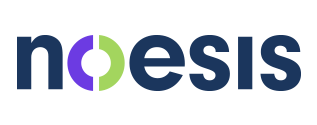Despite having more time available than ever before in front of a screen, why is it so much harder to remain focused, motivated, and engaged each day?
Scientific research shows that our brain needs regular breaks from focused analytical work. Prolonged mental arousal, competing deadlines, and back-to-back meetings leave our brains marinating in a chemical cocktail of cortisol and norepinephrine known to constrain synaptic connections between neurons and keeping our brain in fast beta brain wave activity. Sustained stress also raises blood pressure, lowers our immune system, interrupts sleep, lowers executive functioning, and erodes creativity and strategic ability. * Sound like anyone you know?!
When do we do our best-focused work? When we are in a ‘flow’ state, or what we refer to as our Performance Sweet Spot. This means we are in a positive, relaxed state, fully engaged in a task to the point we lose track of time. Our brain releases endorphins which give us a euphoric feeling.
In this optimum state, we benefit from slower, higher amplitude alpha and theta brain waves and brain chemistry rich in neurotransmitters like serotonin, which lifts mood and dopamine which keeps us motivated and focused on our work.
It’s no wonder then that our calendar of back-to-back meetings each day leaves us feeling fatigued, numb, de-energized, and unmotivated. Continuous meetings and hours sitting in front of a desk with minimal if any break, runs completely counter to what our brains need to reconcile, reflect, visualize, plan, innovate and imagine.
Choose your cocktail
It’s all about choosing your brain chemistry. How can we give ourselves more of what our brain needs to focus and be in flow? Here are 4 key ways:
- Create a container
Create a start and a finish line to your work day. Remember when we left the house in the morning to go to work, had lunch breaks in the cafeteria or local café, and then got to ‘come home’ at the end of each day? Find simple rituals, routines activities, that help delineate between when your working day starts – and finishes.
- Humanize meetings
Our brain automatically tags people we aren’t familiar with, as potential threats. This limits our capacity to take on others’ ideas and perspectives, share information and problem solve with those we don’t know well. We can help optimize our focus and performance in meetings by spending time getting to know people first: Find out what you have in common, come up with shared goals, discover common ground, and spend time getting to know each other before having to collaborate on a work project.
- Limit distractions
When it comes to focus, limiting the number of distractions, helps us focus better and for longer. Our prefrontal cortex is energy-intensive and can only process one cognitive task at a time. Multi-tasking IS a myth! Turn off external chat apps, cell phones and screens and use headphones if you are working among distractions in your home. Making this request of others, as you start meetings, will help them focus also, and the reward can be a meeting that finishes 10 minutes early!
- Shorter meetings
Less is also more when it comes to meeting duration. Why are we still making meetings 60 mins or 30 mins long? Many companies are realizing the benefits of having 50-minute meetings instead of hour-long, and 20 mins meetings instead of half-hour meetings, giving people the opportunity to move, stretch, capture notes and prepare for the next conversation. We are all motivated to get more time back on our calendar, so this could make you a very popular person!
In our next blog, we will look at ways to empower and motivate others.
* Arnsten, A.F.T., 1998. The Biology of Being Frazzled. Science, 280, pp.1711-1712.


Recent Comments